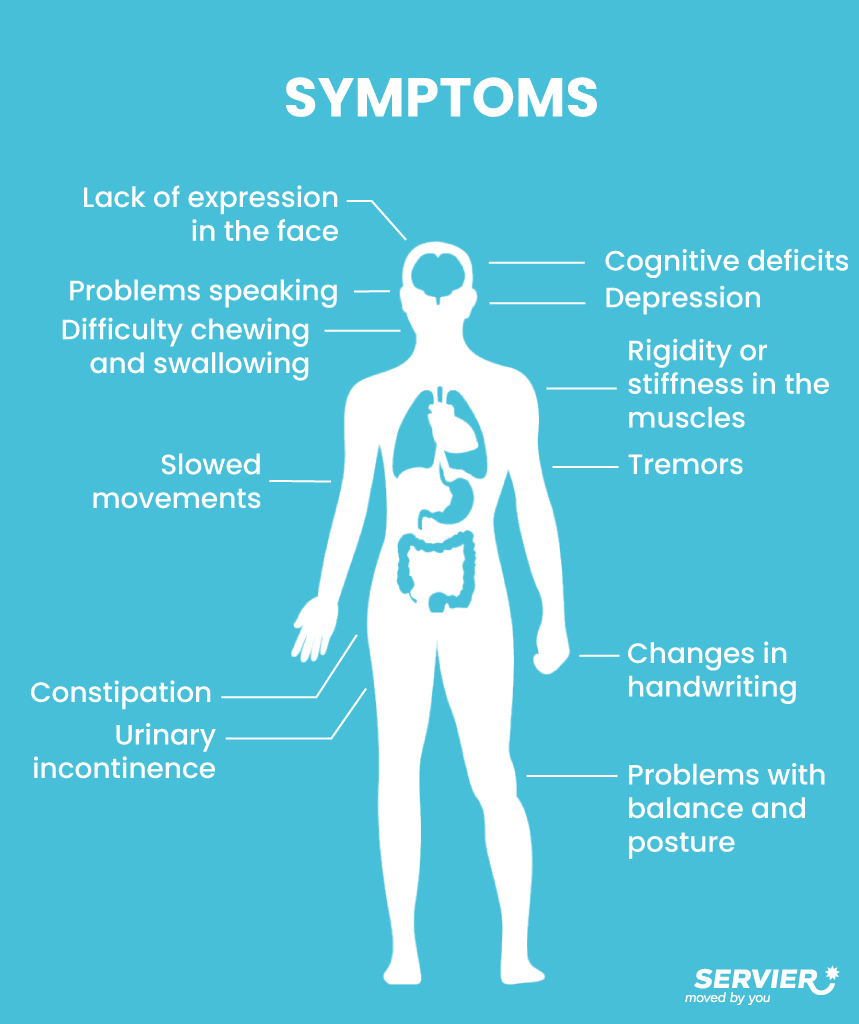Parkinson's: Symptoms, Causes, Treatments and FAQs
Parkinson’s Disease: From Tremors to Triumph — Everything You Must Know
Behind every shaky hand is an unshakable spirit. Let’s understand Parkinson’s, not just as a disease, but as a fight we can win together.
What Is Parkinson’s?
The Science Behind the Shakes
Parkinson’s Disease (PD) is a progressive brain disorder that slowly affects movement, balance, and mood.
It happens when special brain cells that produce dopamine start to die.
Dopamine is the chemical that helps your body move smoothly.
When these cells die, movement signals in the brain get weak, leading to the symptoms of Parkinson’s.
This explains not just what PD is, but also why people shake or slow down.
Symptoms You Shouldn’t Ignore
More Than Just Tremors
Parkinson’s symptoms are divided into Motor (movement) and Non-Motor (hidden) symptoms.
Motor Symptoms (The visible signs):
-
Tremors: Often starting in one hand or finger while resting.
-
Slowness (Bradykinesia): Movements become slow, making daily tasks harder.
-
Muscle Stiffness: Limbs feel tight or heavy.
-
Balance Problems: Leading to falls, because posture control weakens.
Non-Motor Symptoms (Less obvious but equally important):
-
Loss of smell: Sometimes years before movement issues appear.
-
Constipation: Parkinson’s slows gut muscles, too.
-
Sleep troubles: Acting out dreams is an early warning sign.
-
Depression & Anxiety: Because dopamine affects mood as well.
-
Memory loss: In later stages as more brain areas are affected.
Early non-motor signs often appear long before the shaking starts.
Why Parkinson’s Happens
Genes, Toxins & Time
What causes Parkinson’s? It’s a mix of genetics, environment, and aging.
-
Genes: Changes in LRRK2, PINK1, and other genes can raise risk.
Only 10-15% of Parkinson’s cases are inherited.
-
Toxins: Pesticides and well water exposure have been linked.
These toxins damage dopamine-producing cells.
-
Age: Risk rises after 60, but early cases before 50 (Young-Onset PD) also exist.
-
Head Injuries: Repeated trauma, like in boxing, increases risk.
Injuries cause inflammation and brain cell death.
Now you know why Parkinson's strikes some and spares others — it’s part fate, part environment.
How Doctors Detect It
The Diagnosis Decoded
There’s no single test for Parkinson’s. Diagnosis combines careful steps:
-
Clinical Exam: Neurologists check for tremors, slowness, and balance issues.
-
DaTscan Imaging: Shows if dopamine activity is low in the brain.
-
Symptom Scoring: Using the Unified Parkinson's Disease Rating Scale (UPDRS).
-
Rule Out Other Causes: MRI or CT scans to exclude stroke or tumors.
This explains how doctors know it's really Parkinson’s — even without a single lab test.
Your Treatment Toolbox
Pills, Surgeries, and What's Next
Medicines (First-line Help):
-
Levodopa + Carbidopa: The gold standard.
Levodopa restores dopamine; Carbidopa reduces side effects.
-
Dopamine Agonists: Like pramipexole and ropinirole, these mimic dopamine.
-
MAO-B Inhibitors: Selegiline, rasagiline — they slow dopamine breakdown.
-
Amantadine: Eases jerky, involuntary movements (dyskinesias).
Surgical Treatments (For advanced cases):
-
Deep Brain Stimulation (DBS): Tiny brain implants send pulses to improve movement.
Helps when meds no longer work well. Results? 50-60% symptom improvement.
Support Therapies (To improve daily life):
-
Physiotherapy: Strengthens walking and balance.
-
Speech Therapy: For clearer speech and easier swallowing.
-
Occupational Therapy: Helps adapt tasks to stay independent.
Emerging Treatments (The future is bright):
-
Gene Therapy: Trials like AAV2-GAD show promise.
-
Stem Cells: Could replace dead dopamine cells.
-
Immunotherapy: Aims to clear toxic brain proteins (alpha-synuclein).
Now you know what can be done today — and what’s coming tomorrow.
Real Stories, Real Hope
From Michael J. Fox to Everyday Fighters
-
Michael J. Fox was diagnosed at 29. Despite Parkinson’s, he raised over $1 billion for research and inspired millions.
His story shows diagnosis isn’t defeat.
-
Real Case Study: A 63-year-old man regained movement after DBS surgery, cutting meds by 40% and walking unaided.
Science changes lives — not just in theory, but in reality.
FAQs: Your Top Questions Answered
Because Knowledge is Power
Q: Is Parkinson's curable?
No cure yet, but treatments manage symptoms well for many years.
Q: Is it hereditary?
Only 10-15% are genetic. Most cases happen without family history.
Q: How fast does it progress?
Slowly, over 10-20 years. But every case is unique.
Q: Can exercise help?
Yes. Regular exercise improves movement and mood in Parkinson’s.
Q: Is Parkinson’s fatal?
Not directly. But complications like falls can reduce lifespan if untreated.
Q: Can young people get it?
Yes. Young-Onset Parkinson’s occurs before 50 and often progresses slower.
Now every common question is answered — no more confusion.
Final Note: Behind Every Shaky Hand Is an Unshakable Spirit
Parkinson’s is a challenge, but it doesn’t define you. Every small victory — steadying a hand, walking an extra step — builds hope.
Science is advancing. New therapies are on the way. And people with Parkinson’s are proving every day that life doesn’t stop at diagnosis — it adapts, fights, and thrives.
The earlier you catch the signs, the sooner you can take control. Knowledge is your best defense — and every word you’ve read today is a step towards strength.


Comments
Post a Comment
Please comment on this blog-